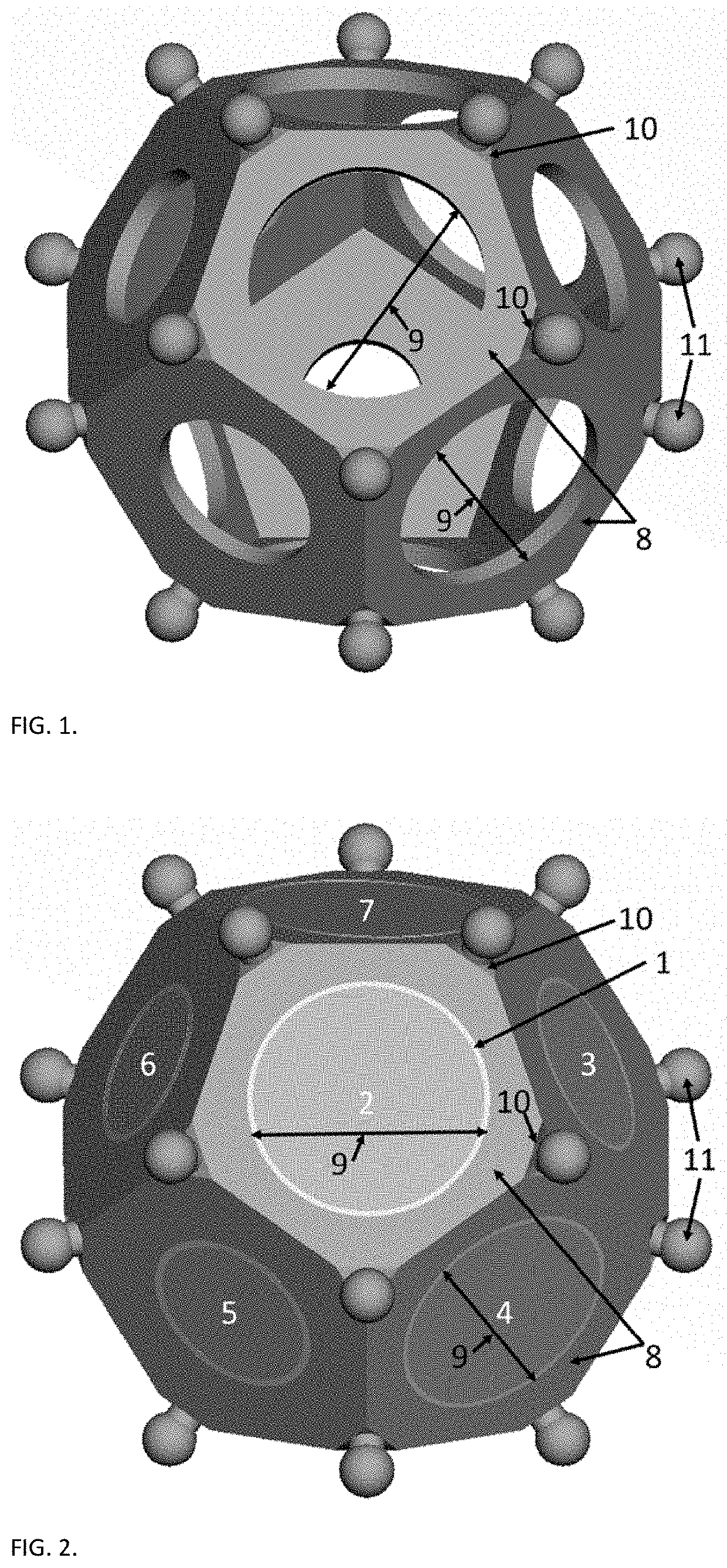Roman dodecahedron coin display
- Summary
- Abstract
- Description
- Claims
- Application Information
AI Technical Summary
Benefits of technology
Problems solved by technology
Method used
Image
Examples
Embodiment Construction
[0049]Parts and Assembly of the Roman Dodecahedron Coin Display
[0050]The 3 parts needed for the assembly of the Roman dodecahedron coin display are:
[0051]Part 1) A duplicate, replica or model of the Roman dodecahedron constructed from bronze or any kind of material with a hollow interior with a circular or elliptical hole of possibly different sizes in each of the 12 faces and small spherical balls or knobs on each of the 20 vertices so that the Roman dodecahedron has a size and appearance similar to a real Roman dodecahedron.
[0052]Duplicates, replicas or models of the Roman dodecahedron can be constructed from scratch or can be purchased at stores, internet websites and some museums displaying real Roman dodecahedrons.
[0053]As an example of a Roman dodecahedron FIG. 1 shows a picture of a computer model of a hollow Roman dodecahedron with pentagonal faces (8), holes (9), vertices (10), and knobs or spherical balls (11), found buried in ruins of a Roman building in Jublains, France ...
PUM
 Login to View More
Login to View More Abstract
Description
Claims
Application Information
 Login to View More
Login to View More - R&D
- Intellectual Property
- Life Sciences
- Materials
- Tech Scout
- Unparalleled Data Quality
- Higher Quality Content
- 60% Fewer Hallucinations
Browse by: Latest US Patents, China's latest patents, Technical Efficacy Thesaurus, Application Domain, Technology Topic, Popular Technical Reports.
© 2025 PatSnap. All rights reserved.Legal|Privacy policy|Modern Slavery Act Transparency Statement|Sitemap|About US| Contact US: help@patsnap.com

